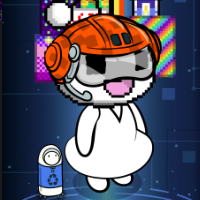- cross-posted to:
- xkcd
- cross-posted to:
- xkcd
fuel facilities generally do a pretty good job of keeping the water clean, but it’s radioactive enough that it wouldn’t be legal to sell it as bottled water. Which is too bad – it’d be an amazing energy drink.
The Revigator was intended to add radioactivity (radon) to drinking water. Water without redioactivity was “devoid of its life element.” Water without radioactivity was like air without oxygen.
The glazed ceramic body of the jar has a porous lining that incorporated uranium ore. Water placed inside the jar would absorb the radon released by decay of the radium in the ore. Depending on the type of water, the resulting radon concentrations would range from a few hundred to a few hundred thousand picocuries per liter.
Advertised as “an original radium ore patented water crock,” it sold in the hundreds of thousands between 1924 and 1930.
A company brochure stated, “Results overcome doubts.” “The millions of tiny rays that are continuously given off by this ore penetrate the water and form this great HEALTH ELEMENT–RADIO-ACTIVITY. All the next day the family is provided with two gallons of real, healthful radioactive water… nature’s way to health.”
Users were provided the following printed instructions on the side of the jar:
- Fill jar every night.
- Use hydrant or any good water.
- Drink freely when thirsty and upon arising and retiring. Average six or more glasses daily. Scrub with a stiff brush and scald monthly.
The tan version shown here is the most commonly encountered style of Revigator.
https://www.nationalgeographic.com/science/article/100118-radiation-toxic-water-revigator
But according to a new study, radiation from the jug wasn’t the biggest problem. Makers of the Radium Ore Revigator promised the jug would enrich drinking water left inside overnight with “the lost element of original freshness—radioactivity.” The “treated” water was supposed to relieve everything from arthritis and senility to flatulence.
(Related: “Radiation in Teeth Can Help Date, ID Bodies, Experts Say.”)
Such a seemingly wacky belief came from the fact that spring water naturally contains radioactive radon gas, said study leader Michael Epstein, an analytic chemist at Mount St. Mary’s University in Emmitsburg, Maryland.
It wasn’t too big a leap to assume that radioactive water would be a healthy elixir, Epstein said. In the early 20th century, the Revigator sold by the hundreds of thousands in the U.S.
“Unfortunately for them, they were wrong,” Epstein said. By the 1930s scientists had realized that exposure to radiation can cause cells in the body to go haywire, triggering cancer.
However, Epstein and colleagues were curious just how big a risk radiation played compared to the ore itself.
What they found is that the jar’s uranium-ore lining released surprising amounts of toxic elements, such as arsenic and lead, into the drinking water.
Arsenic can also cause cancer, and lead can severely damage the nervous, urinary, and reproductive systems.
Toxic Water
For their study, Epstein and colleagues bought four Revigators from antique stores or on eBay. The jars still exude the same amount of radiation as they did in the early 1900s.
Uranium ore contains some amounts of the highly radioactive metal radium, which decays into radon gas.
The team first used a Geiger counter to measure the amount of radon gas the jars emitted. Though radon levels were higher than an average person’s exposure, the risk of death from the jars’ radiation was relatively low.
Epstein’s team also used a highly sensitive instrument called a mass spectrometer to analyze the concentration of toxic elements in the radon-infused water.
If a person had followed the Revigator company’s advice to “drink freely when thirsty and upon arising and retiring,” the toxic water would have drastically exceeded healthy exposure levels currently recommended by the U.S. Environmental Protection Agency.
For instance, the maximum level of exposure to uranium set by the EPA is 0.030 parts per million—one of the Revigators expelled up to 0.056 parts per mllion of the substance.
(Related: “Pick Your Poison—12 Toxic Tales” in National Geographic magazine.)
What’s more, if people added a slightly acidic beverage such as wine or fruit juice to the jar, the resulting fluid contained 300 times more than the maximum arsenic intake recommended by the EPA.
So…probably not really a radiation risk, more that uranium itself is toxic independent of any radiation, and more-importantly that the ore had other elements that could enter the water that were also not great for you. But it’s kinda been done.
The poor study leader’s last name.
I hope he starts making What If?'s about things he hasn’t covered in his comic. This video was essentially the spent nuclear fuel pool comic in video form, including the joke at the end about being shot.
Right now I think the videos have all been from past What If…? entries. He’s already done the research, so to me it makes sense to use it again. Maybe some people prefer videos/audio to reading. Similarly, if he ever does new ones for a video, I assume he would also turn those in to written entries as well for the website. For him most of the work would be the research, so he might as well get as much use out of it as he can. I can understand doing exclusive ones for the books, though. He’s getting paid for those, so it’s worth extra effort.
What I keep thinking is: he’s already done the technical research, then condensed everything down to a (usually) easily understandable, thought provoking, (often) 4-panel artistic comic - basically all the really hard stuff.
Remember all those fucking annoying YouTube channels, where the “creator” would just grab posts and comments from /bestof or /goodlongposts, or top-voted stuff from /aitah, etc, and then they’d just have a robotic voice read the content and they were getting all these views even though they weren’t actually doing anything creative?
I’d rather he get any YouTube money from his actual effort, than some sketchy YouTube “creator” - because you know the only reason there isn’t a channel for it yet is that no one’s thought of it yet.






